Has a Hurricane Ever Made Landfall in California?

Hollywood has destroyed Los Angeles again and again. Filmmakers have imagined every conceivable calamity for Los Angeles, from monstrous earthquakes (2015’s “San Andreas”) to extraterrestrial liquidations (1996’s “Independence Day”), or, even more improbably, a volcanic eruption from the La Brea Tar Pits (1997’s “Volcano”). “No other city," wrote Mike Davis in "Ecology of Fear," "seems to excite such dark rapture."
Indeed, a hurricane might be the only natural disaster Hollywood has spared Los Angeles, despite the obvious cinematic potential. (Imagine surfers daring a broiling Pacific as gale-force winds peel the letters of the Hollywood sign off Mount Lee, one-by-one.)
If Hollywood were to pummel California with a CGI hurricane, it wouldn’t be imagining an impossible event – only a very rare one.
We rightfully associate tropical cyclones with the Atlantic and Gulf coasts rather than the Pacific. And yet, if filmmakers were to pummel California with a CGI hurricane, they wouldn’t be imagining an impossible event – only a very rare one, but one recorded in the annals of the Golden State's history.
As the name suggests, tropical cyclones feed off the energy stored in warm ocean waters. Thus, even when a storm forms off the coast of Central America and wanders north toward California, it usually loses its punch when it encounter the cool waters of the California Current. (JPL oceanographer Bill Patzert describes as the current as “a hurricane repellent.”) When a cyclone makes itself felt in L.A., it’s usually in the form of its moist, subtropical, and generally harmless remnants that sneak through Arizona or the Sea of Cortez to drench the city.
But if it moves fast enough, and if sea surface temperatures reach a threshold of about 75 degrees Fahrenheit (possible during a strong El Nino), a tropical cyclone can theoretically bring its fury to the Southland.

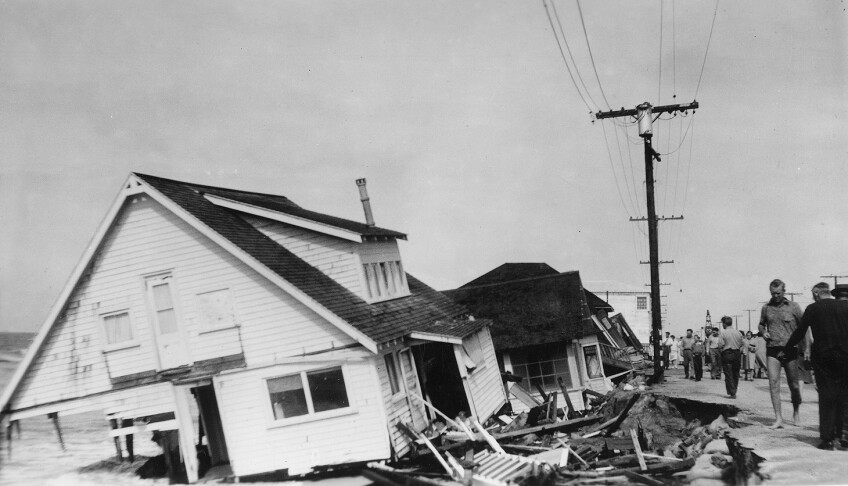
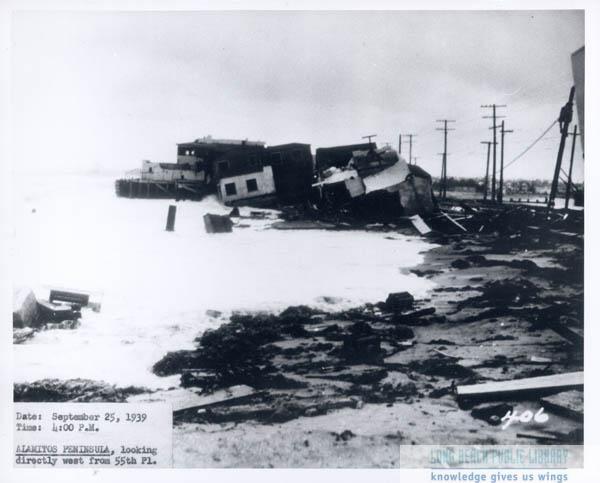
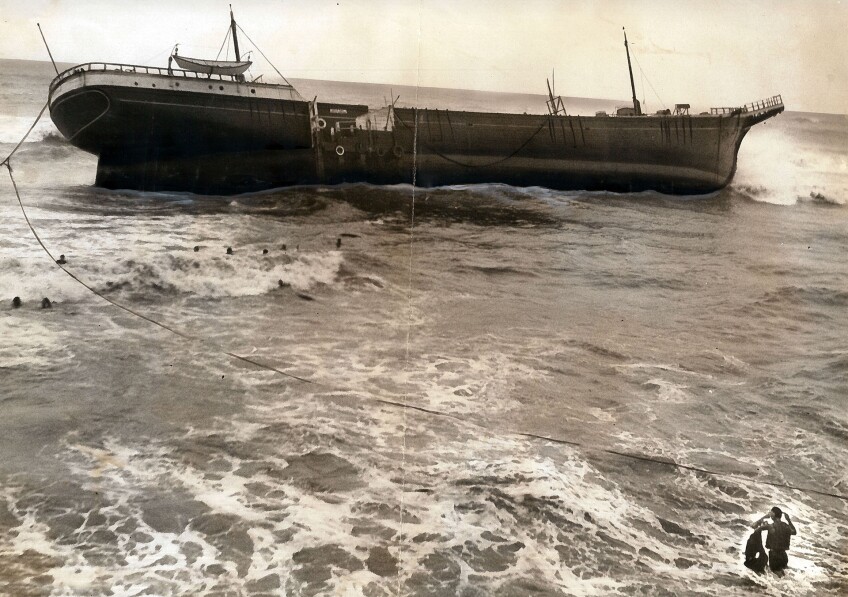
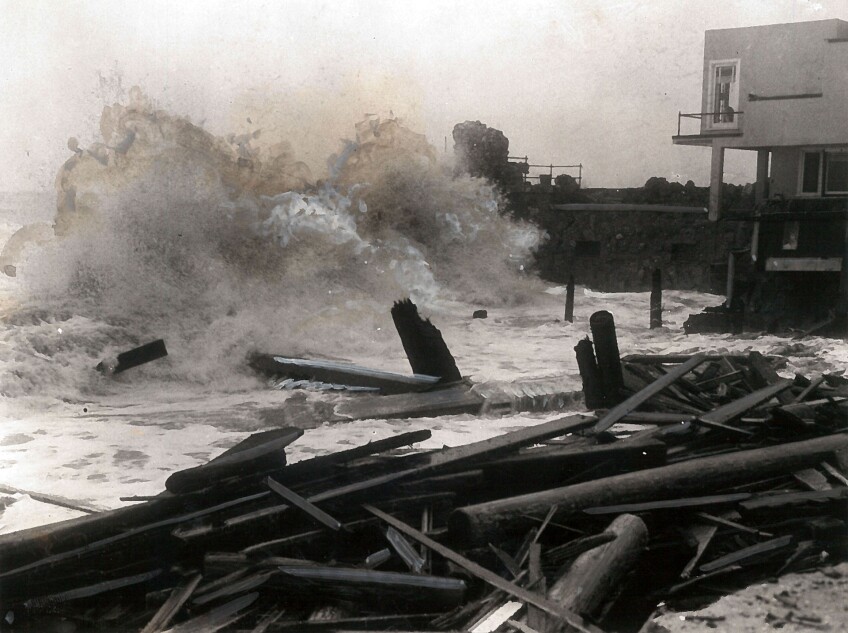

On Sept. 25, 1939, one such perfect storm passed over Catalina Island and collided with the coast of Long Beach. 72-mph gusts tore through the region as the storm dumped a record 5.62 inches of rain on downtown Los Angeles, flooding large parts of the region and causing $2 million in property damage.
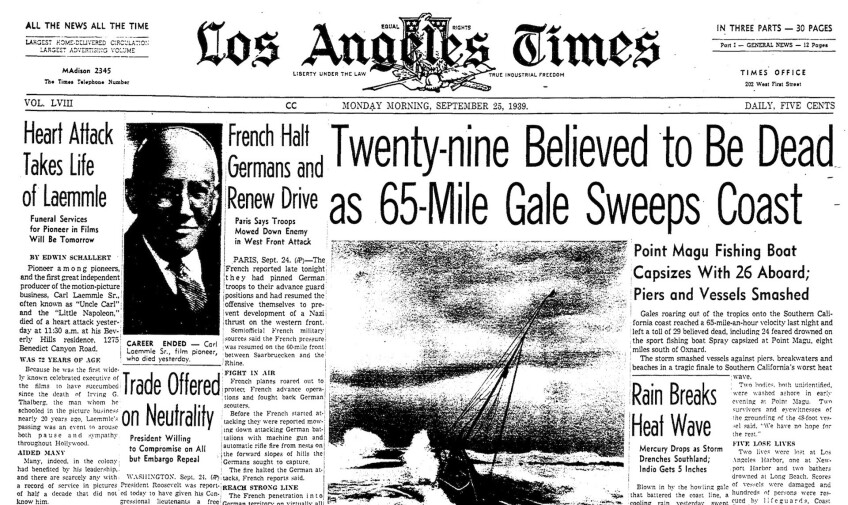
The storm's impact was worsened by the fact that it followed the more predictable weather conditions associated with offshore Santa Ana winds. Caught off-guard by the gale-force winds and heavy seas, 45 boaters perished in the Pacific, many of them fleeing Catalina for the mainland. Dozens more died on land, bringing the death toll close to 100. The “howling gale” and its aftermath dominated the front page of the Los Angeles Times for days – even as another tempest, the beginnings of World War II, raged across Europe.
Classed as a mere tropical storm, the 1939 system was the only cyclone to make landfall in California in the twentieth century. For a time, meteorologists doubted that a true hurricane (a cyclone with sustained winds of at least 64 knots, or 74 mph) could ever reach the Southland. But recently, researchers at the National Oceanic and Atmospheric Administration dug into the historical record and unearthed evidence that such storms are a real (if statistically unlikely) threat.
Consulting folk accounts, military weather readings, and historical newspaper accounts, Michael Chenoweth and Christopher Landsea rediscovered a hurricane that ravaged the Southern California coast on Oct. 2, 1858.

In an age before satellite images or even weather balloons, the storm took the Southland by surprise. The keeper of San Diego's tide gauge was the first to notice it when his barometer plummeted several degrees below the record low. Then, hurricane-force winds of up to 75 mph sprang up from the southeast.
"The whole heavens seemed closing in with bank upon bank of dark, heavy, ominous-looking clouds," reported the Daily Alta California.
"The whole heavens seemed closing in with bank upon bank of dark, heavy, ominous-looking clouds," reported the Daily Alta California.
Ships dragged their anchors in the heavy seas and beached themselves on shore. Powerful gusts blew down houses and uprooted trees.
The hurricane skirted San Diego and followed the coast north to Los Angeles, where it dumped torrential rains and ravaged the city's harbor at San Pedro. But the tempest was already dying; it dissipated shortly after reaching Los Angeles, the relatively cool coastal waters soothing its rage. It wasn't exactly a Hollywood ending, but it was one that might have elicited cheers, anyway, from residents of the adobe town.





